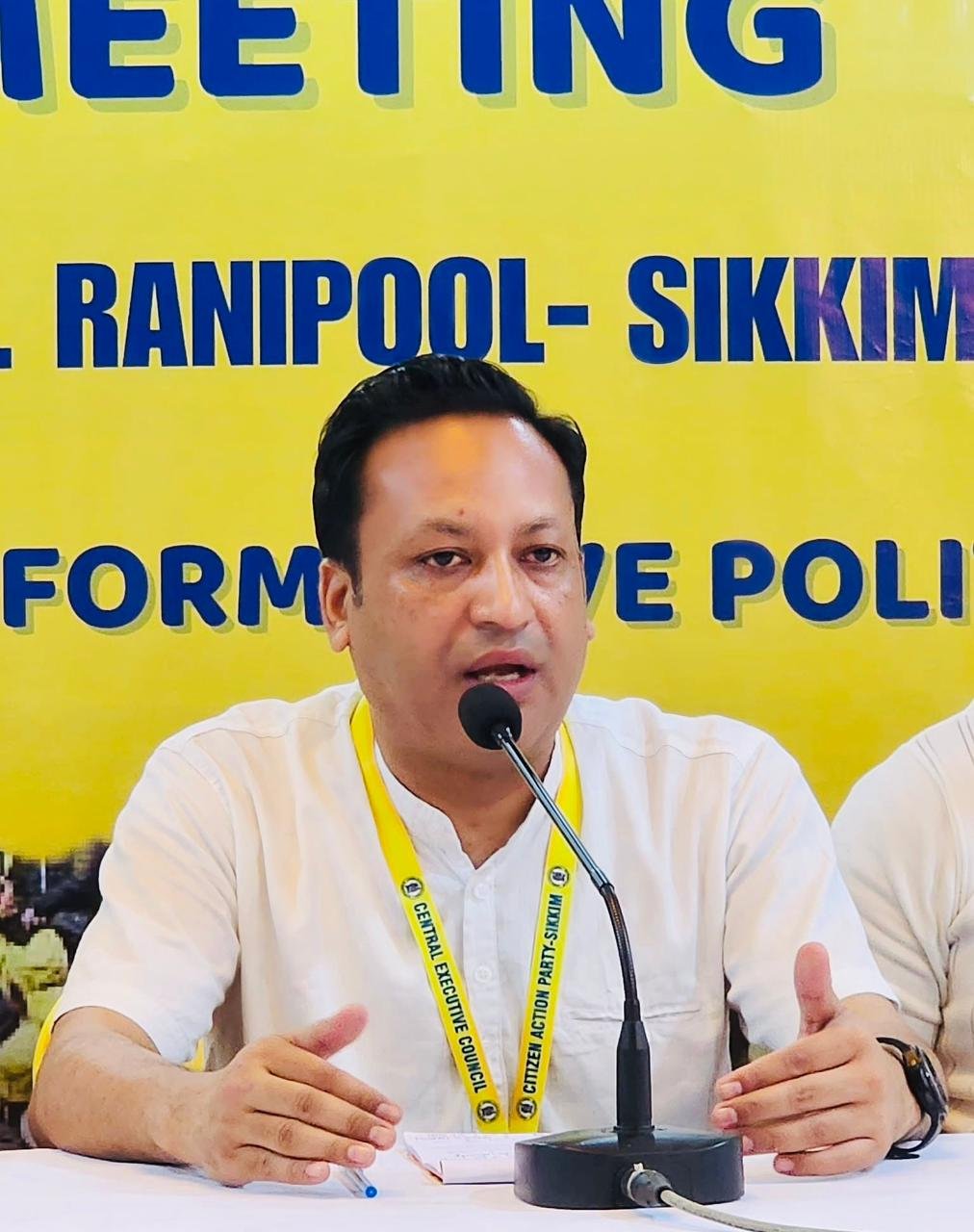The Himalaya, often called the “Third Pole,” is melting faster than imagined, and Sikkim is living with its consequences. The Glacial Lake Outburst Flood (GLOF) of October 2023, when South Lhonak Lake burst and released nearly 50 million cubic meters of water, is a tragedy etched in memory. A peer-reviewed study in Science confirmed that unusual warming and intense rainfall destabilised the lake and triggered the flood (Science.org, 2024). The International Centre for Integrated Mountain Development (ICIMOD) also underlined that climate change played a “key role” in the deadly event (ICIMOD, 2024).
The mountains of Sikkim are fragile by nature. These young Himalayas are unstable, prone to landslides, cloudbursts, and earthquakes. Climate change magnifies these risks. Between 2011 and 2024, Himalayan glacial lakes expanded by 33.7%, from 1,962 hectares to 2,623 hectares, according to government data published in The Hindu (The Hindu, 2024). This expansion is not harmless; it represents millions of tonnes of water now stored precariously in high-altitude lakes.
In Sikkim, the Department of Science and Technology has identified 40 glacial lakes, with 16 marked as high-risk. South Lhonak and Shako Chho are among those now labelled as “very high risk,” as their water levels approach pre-2023 flood conditions. Thirteen of these dangerous lakes lie in Mangan district, feeding the Teesta, while three in Gyalshing flow into the Rangit River (India Today NE, 2024). People living downstream face a constant shadow, their safety tied to the stability of distant lakes that most will never see.
This is not simply an environmental issue. It is about livelihoods, homes, culture, and security. When glaciers recede and lakes expand, ecosystems unravel, alpine meadows shrink, rivers change course, biodiversity suffers. The Himalaya is not just a backdrop for scenic postcards; it is the living foundation of survival.
The state government, alongside national agencies, has launched high-altitude expeditions, using drones, LIDAR, and bathymetric surveys to study the risk. These steps are commendable, but they are not enough. Early warning systems must reach every village in time, and infrastructure planning must account for climate risks. Development cannot continue blindly. Big cities and industrial centres elsewhere have contributed the most to climate change, yet it is the fragile Himalayan states like Sikkim that pay the price. A new model of development is urgently required, one that does not sacrifice ecology at the altar of short-term gain.
Climate education must also begin early. Schools should include climate and environmental studies as a core subject, ensuring the next generation grows up understanding both the risks and responsibilities of living in a climate-sensitive region. Awareness and preparedness must become part of everyday life.
And finally, climate change must move to the centre of political discourse. It should not be overshadowed by blame games or low-standard politics. Leaders and parties must bring forward meaningful debate on climate policy and resilience. In Sikkim, climate change should be the main issue in politics, for it determines the future of rivers, valleys, and people.
The Himalaya is speaking, and its voice is growing louder. Melting glaciers, swelling lakes, and destructive floods are warnings. The choice now is between courage and neglect. If we act with urgency, we can protect lives and livelihoods. If we delay, the mountains will remind us again, in harsher and more unforgiving ways.



People understand and have voiced against it but who would make our political leaders understand the situation of climate conditions ?
The policies that gets framed under their guidance could make a lot of difference.